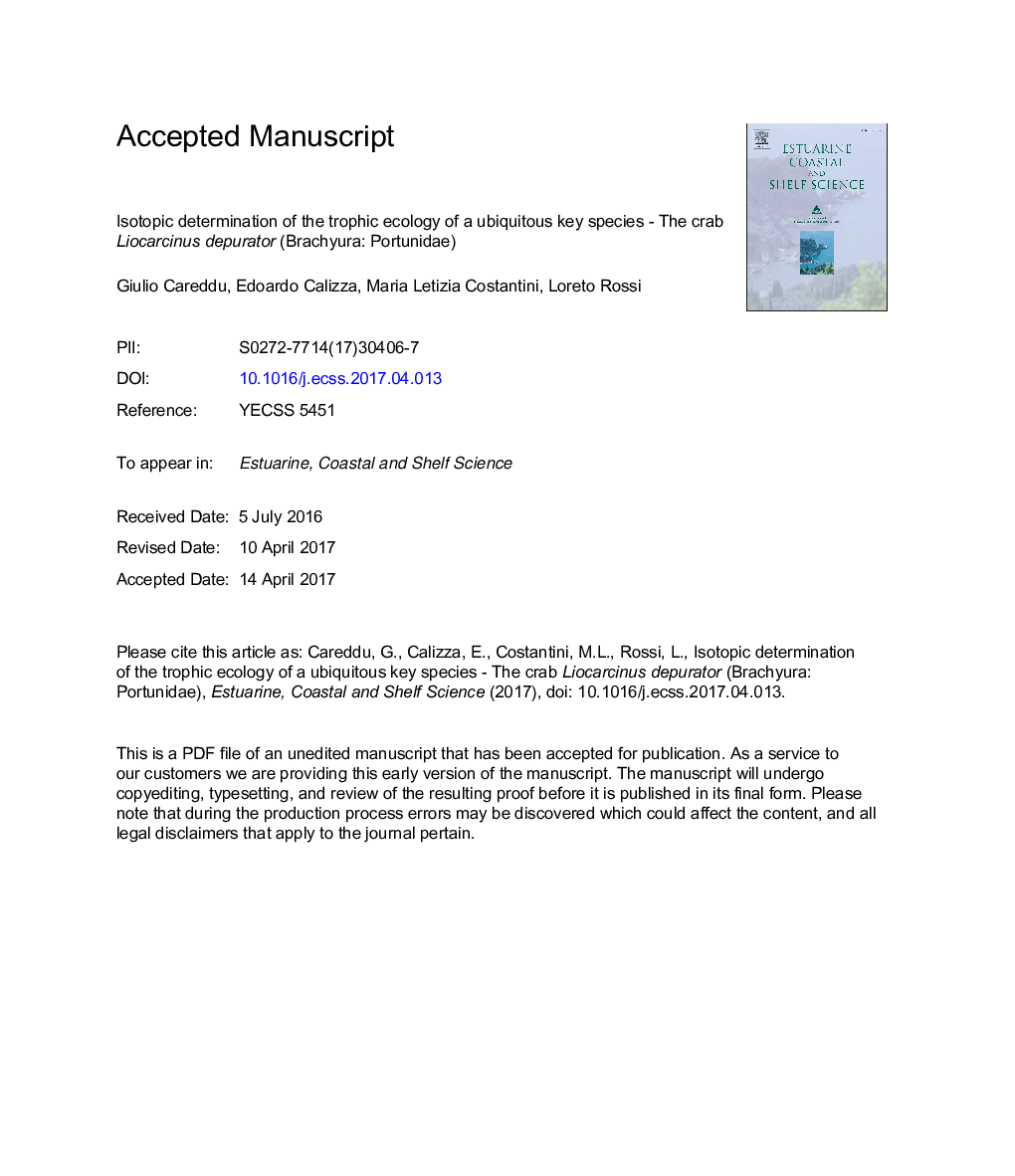| Article ID | Journal | Published Year | Pages | File Type |
|---|---|---|---|---|
| 5765341 | Estuarine, Coastal and Shelf Science | 2017 | 26 Pages |
Abstract
Knowledge of the trophic ecology of predators is key to understanding how they affect food web structure and ecosystem functioning. The harbour crab Liocarcinus depurator (L.) (Brachyura: Portunidae) is one of the most abundant decapod species in soft-bottom areas of the Mediterranean Sea and northeast Atlantic Ocean. It is both a common prey and predator of commercial and non-commercial marine species and its predation pressure appears to have little effect on the subtidal community assemblage. However, there are few studies of its diet and little is known about its role in mediating energy flows in marine ecosystems. In this study, carbon (δ13C) and nitrogen (δ15N) stable isotope analysis (SIA) and Bayesian analytical tools were used to characterise the trophic niche of L. depurator and to quantify the most important prey supporting this species under various environmental conditions. Specimens of L. depurator, their potential prey and basal resources were collected from two different subtidal areas of the Gulf of Gaeta, one affected by human activities (north side) and the other seasonally influenced by freshwater inputs originating from the River Garigliano (south side). While there were differences between the two sampling areas in terms of the abundance and δ15N and δ13C values of the macrobenthic prey community, no differences in the δ15N values and trophic position of L. depurator were observed. Specifically, Bayesian mixing models showed Polychaeta Errantia as the main source of crab diets in both areas. The observed differences in the δ13C values and the analysis of trophic pathways also indicate that the terrestrial organic matter originating from the discharge of the River Garigliano was integrated along the food web up to L. depurator. Although this species is usually considered an opportunistic feeder, it appears to be highly selective and its trophic habits did not influence food web topology, which in contrast was found to be strongly influenced by River Garigliano discharge.
Related Topics
Physical Sciences and Engineering
Earth and Planetary Sciences
Geology
Authors
Giulio Careddu, Edoardo Calizza, Maria Letizia Costantini, Loreto Rossi,
